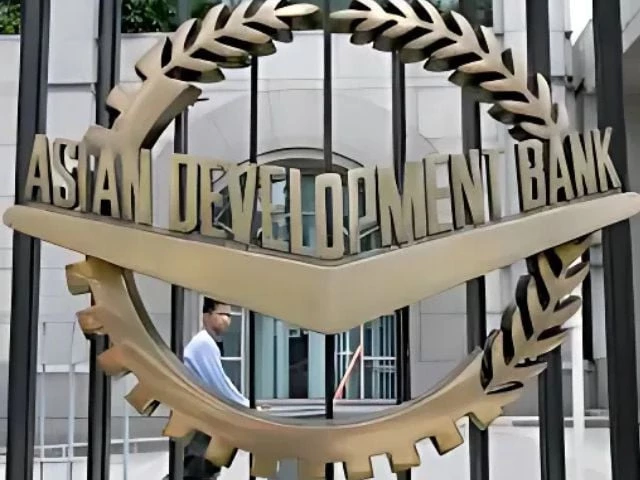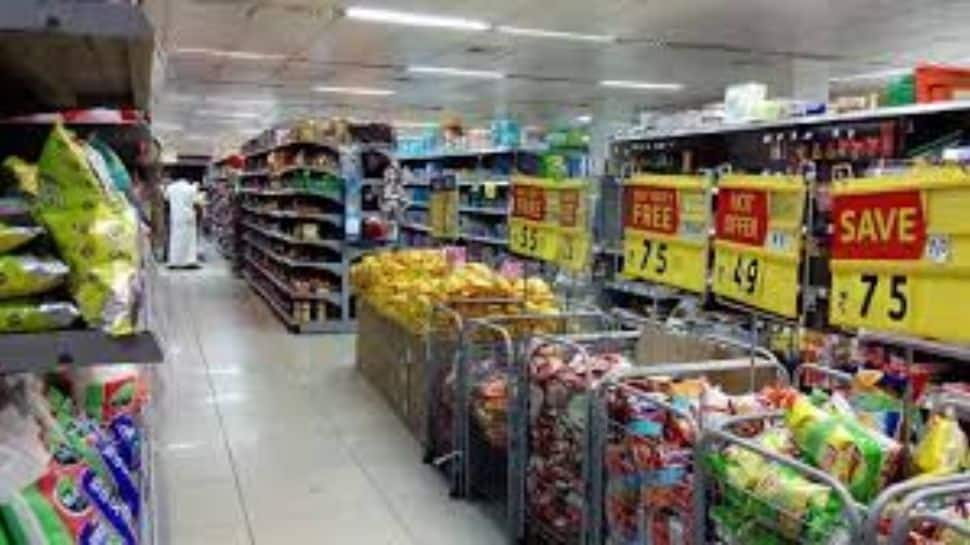Business
Govt turns to ADB for $2b rail project after China funding stalls | The Express Tribune

The Asian Development Bank will fund upgrades to part of Pakistan’s creaking railway system, replacing China, after prolonged delays in securing financing from Beijing threatened to put a strain on a strategic mining project, two sources said on Friday.
An extensive revamp of 1,800 km of railways has been the centrepiece of a $60 billion Chinese investment programme in Pakistan announced in 2015 as part of Beijing’s Belt and Road Initiative global infrastructure push.
A decade of negotiations, however, have yet to produce a finance package for the rail upgrades – the single biggest project under the programme with China. And Pakistan is, meanwhile, struggling to repay Chinese debt owed for other projects.
The ADB is in advanced talks to lead the financing of a $2 billion upgrade of a 500-km stretch of the railway line from Karachi to Rohri that had previously been part of the Chinese project, two sources with direct knowledge of the discussions told Reuters.
Also Read: 11th NFC formed as Centre, provinces brace for fiscal tug-of-war
The upgrade has become urgent, they said, as it is needed to transport copper ore from the Reko Diq mine currently being developed by Canada’s Barrick Mining Corp. “We will have a crisis. How will you evacuate output from Reko Diq? The exhausted line will come under even more pressure,” one of the sources, a senior government official, said.
The ADB would not confirm the finance package, which is being reported for the first time by Reuters. But it said Pakistan’s government and the regional lender “have regular discussions on railway sector development”.
“Any potential ADB assistance would be subject to comprehensive due diligence and consideration under ADB’s policies and procedures before any commitment is made,” it wrote in a statement to Reuters.
The deal, expected to be announced later this month, would see the ADB lead a consortium to finance the project and bring in an international engineering contractor to carry out the work through a competitive bidding process, the sources said. The ADB announced $410 million in financing for the Reko Diq mine itself earlier this week. And its president is due to visit Islamabad next week, the sources said.
China and Pakistan: ‘Ironclad friends’?
The sources said the plan is diplomatically tricky but has been squared with China. “We would never do anything to jeopardise that relationship,” the senior Pakistani official said.
China rolled out major power and infrastructure projects after the 2015 launch of the investment programme, known locally as the China-Pakistan Economic Corridor. But momentum has stalled, with the last big project – the Gwadar East Bay Expressway – inaugurated in 2022.
Also Read: Chinese FM Wang Yi, COAS Munir meet on regional security, counter-terrorism
Islamabad has fallen behind on payments for electricity generated by Chinese-built power plants. And following a government report looking at the cost of the power stations, Islamabad has for the past year sought to reschedule debt payments for the plants.
“China and Pakistan are ironclad friends and all-weather strategic cooperative partners,” China’s foreign ministry said on August 19, ahead of a visit by Foreign Minister Wang Yi to Islamabad this week.
In Wang’s meeting with Pakistan’s Prime Minister Shehbaz Sharif on Thursday, both sides said they sought to deepen ties and move on to the next phase of CPEC.
Pakistan’s mining ambitions
The Reko Diq copper and gold mine – at the heart of the government’s strategy to attract investment to Pakistan’s mining sector – is due to enter production in 2028 with anticipated annual output of some 200,000 metric ton of copper concentrate. One of the world’s largest untapped copper deposits, it is Pakistan’s largest foreign investment in recent years.
The ADB-financed rail upgrade would modernise the track and bridges from the commercial capital Karachi north to Rohri, close to the city of Sukkur, so that diesel trains can run faster, the sources said. In Rohri, the line will meet a branch coming from the area of the Reko Diq mine and will carry the copper concentrate to port.
Tim Cribb, Reko Diq’s project director, told Reuters that the government and Barrick would work together on securing financing for the upgrading of the branch coming from the west to Rohri. The mine also faces security concerns, as it lies in the insurgency-hit western province of Balochistan, with militants frequently targeting the rail network.
Business
OGRA Announces LPG Price Increase for December – SUCH TV

The Oil and Gas Regulatory Authority (OGRA) has approved a fresh increase in the price of liquefied petroleum gas (LPG), raising the cost for both domestic consumers and commercial users.
According to the notification issued, the LPG price has been increased by Rs7.39 per kilogram, setting the new rate at Rs209 per kg for December. As a result, the price of a domestic LPG cylinder has risen by Rs87.21, bringing the new price to Rs2,466.10.
In November, the price of LPG stood at Rs201 per kg, while the domestic cylinder was priced at Rs2,378.89.
The latest price hike is expected to put additional pressure on households already grappling with rising living costs nationwide.
Business
Taxable Value Of Goods Surges 15% In Sep-Oct As GST Cuts Boost Consumption

New Delhi: The taxable value of all supplies under GST surged by a robust 15 per cent during September-October this year, compared to the same period in 2024 due to sharp increase in consumption triggered by the tax rate cuts on goods across sectors that kicked in from September 22, according to official sources.
The growth in the same two-month period last year was 8.6 per cent. “This surge in taxable value during ‘Bachat Utsav’ demonstrates strong consumption uplift, stimulated by reduced rates and improved compliance behaviour,” a senior official said.
He pointed out that the growth has especially been strong in sectors where rate rationalisation was implemented, such as FMCG, pharma goods, food products, automobiles, medical devices and textiles. In these sectors, the taxable value of supplies has seen significantly higher growth, confirming that lower GST rates translated directly into higher consumer spending.
“It vindicates our strategy that reducing rates on essentials and mass-use sectors would create demand-side buoyancy — a Laffer Curve–type demand uplift,” he explained.These trends confirm that GST next-gen reforms have not disrupted revenue stability, and that consumption-side buoyancy has begun to translate into higher taxable value in key sectors.
This growth is in value terms which means that since GST rates were lower, the growth in volume terms will be even higher. It is clearly visible that while the Next Gen Reforms resulted in significant Bachat — increased consumption, industry has been very proactive in passing on the GST savings to the final consumers and ensuring that there is no supply side deficiency.
As GDP private consumption data will be released much later, GST taxable value serves as the most reliable real-time proxy for consumption, and the current numbers clearly indicate sustained demand expansion, the official added.
Business
Private sector data: Over 2 lakh private companies closed in 5 years; govt flags monitoring for suspicious cases – The Times of India

NEW DELHI: The government on Monday said that over the past five years, more than two lakh private companies have been closed in India.According to data provided by Minister of State for Corporate Affairs Harsh Malhotra in a written reply to the Lok Sabha, a total of 2,04,268 private companies were shut down between 2020-21 and 2024-25 due to amalgamation, conversion, dissolution or being struck off from official records under the Companies Act, 2013.Regarding the rehabilitation of employees from these closed companies, the minister said there is currently no proposal before the government, as reported by PTI. In the same period, 1,85,350 companies were officially removed from government records, including 8,648 entities struck off till July 16 this fiscal year. Companies can be removed from records if they are inactive for long periods or voluntarily after fulfilling regulatory requirements.On queries about shell companies and their potential use in money laundering, Malhotra highlighted that the term “shell company” is not defined under the Companies Act, 2013. However, he added that whenever suspicious instances are reported, they are shared with other government agencies such as the Enforcement Directorate and the Income Tax Department for monitoring.A major push to remove inactive companies took place in 2022-23, when 82,125 companies were struck off during a strike-off drive by the corporate affairs ministry.The minister also highlighted the government’s broader policy to simplify and rationalize the tax system. “It is the stated policy of the government to gradually phase out exemptions and deductions while rationalising tax rates to create a simple, transparent, and equitable tax regime,” he said. He added that several reforms have been undertaken to promote investment and ease of doing business, including substantial reductions in corporate tax rates for existing and new domestic companies.
-

 Sports1 week ago
Sports1 week agoWATCH: Ronaldo scores spectacular bicycle kick
-

 Entertainment1 week ago
Entertainment1 week agoWelcome to Derry’ episode 5 delivers shocking twist
-

 Politics1 week ago
Politics1 week agoWashington and Kyiv Stress Any Peace Deal Must Fully Respect Ukraine’s Sovereignty
-

 Business1 week ago
Business1 week agoKey economic data and trends that will shape Rachel Reeves’ Budget
-

 Politics1 week ago
Politics1 week ago53,000 Sikhs vote in Ottawa Khalistan Referendum amid Carney-Modi trade talks scrutiny
-

 Tech6 days ago
Tech6 days agoWake Up—the Best Black Friday Mattress Sales Are Here
-

 Tech1 day ago
Tech1 day agoGet Your Steps In From Your Home Office With This Walking Pad—On Sale This Week
-

 Fashion1 week ago
Fashion1 week agoCanada’s Lululemon unveils team Canada kit for Milano Cortina 2026






